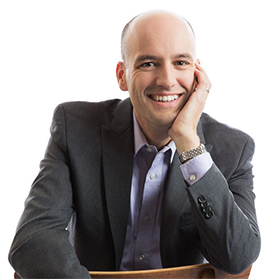The Oakland East Bay Symphony, Oakland Youth Orchestra, and Oakland Symphony Chorus began 2012 on a triumphant note with a sellout program featuring Carl Orff's iconic Carmina Burana. Featuring artistic direction by the Symphony’s Michael Morgan, the Chorus’ Lynne Morrow, and the Youth Orchestra’s Brian Nies, the performance celebrated the organizations’ recent merger and demonstrated how a partnership among diverse arts and styles can spotlight the best of each. (See the case study “Oakland East Bay Symphony: From Streamlining to Strengthening Performance” by Melissa Mendes Campos.)
Related Content
The performance took place a year and a half after the merger was completed, and a year and a half before I was named executive director. This goes to show that the process of forging a new, unified identity takes time—and continues even today. There seems to be a prevailing belief in the nonprofit sector that you can merge the cultures of partnering organizations, but I disagree. You can’t simply merge the culture. Rather, you start a new organization—and this means creating a new culture.
The merger of the three Oakland-based performing arts organizations was in many ways a no-brainer; the constituent organizations not only had shared values, they also had common origins. The Youth Orchestra and the Chorus started more than 50 years ago as ensembles of the former Oakland Symphony. Then, when the latter was dissolved in the 1980s, the Oakland East Bay Symphony emerged to take its place. All have deep ties in the Oakland community, and at the time the merger was first being considered, all were experiencing similar economic pressures that made it increasingly difficult to fulfill their artistic ambitions.
Yet each organization also had evolved quite independently to form its own culture. The Oakland East Bay Symphony, the largest of the three, had more traditional infrastructure, including a sizeable board, full-time staff, and robust administrative systems. The Oakland Youth Orchestra had a different set of strengths, emphasizing its educational mission. And the Oakland Symphony Chorus had kept its structure lean to focus on chorale music appreciation and performance opportunities, with many administrative functions managed by the board. Over the past several months, as we have continued to combine our back office functions, we have seen these cultural differences come into high relief, along with the imperative to define a new culture moving forward.
For example, one immediate result of the merger was that there was more part-time staff than full-time salaried positions. I felt that to bring stability and consistency to the newly merged organization’s operations, we needed to move toward more full-time staff. This has not been easy. It has meant some staff transitions, due to changes in roles and responsibilities. But it has also served as a catalyst, enabling us to acquire and develop new talent in areas that will be critical to our continued success.
Another challenge has been to create a unified governance structure and, with it, a new culture around leadership and decision making. As part of the merger agreement, we identified a combined board of directors, drawing from each of the existing boards. We also formed advisory boards to engage dedicated, longtime volunteers. The role and function of these advisory groups, as well as the proliferation of committees, are being explored with guidance from a seasoned governance consultant.
The Bay Area is a busy market, and the classical music world is changing. If the Oakland East Bay Symphony is to remain a vital and successful resource to our communities, we need to develop a culture that is alert and nimble enough to recognize and respond to our market changes. For example, customers seem to be looking for more flexibility when purchasing subscription ticket packages, which means we must provide a variety of packages and small subscription sets. Also, younger donors seem to want a more visceral connection to the programs they support, which means we must find new ways to show donors how their money is truly making a difference. This merger is enabling us to determine how to do this in a unified and more powerful way.
Have all the changes over the past three and half years been worthwhile? Yes. The most obvious benefit is the greater visibility of the Youth Orchestra and the Chorus. The Symphony as a brand is now stronger, because it includes all the elements of an established symphonic institution. The closer association of the Youth Orchestra with MUSE (a long-established music education program working in Oakland schools) also provides a much clearer message to the public about our core values of education and community engagement.
Although it is too early to judge the results of combined donor solicitations or how audience crossover may play out, the net outcome is that we are all part of one organization, with stronger back office operations to support our artistic mission.
So for those considering a merger, I advocate it strongly—if your mission calls for it. Just be very clear about what your new core values will be, how you will build them, and how the culture you construct from your merger will impact your community. This will steer you to your desired future.
Steven Payne joined the Oakland East Bay Symphony as executive director in July 2013, where he also leads the administrative staff for the Oakland Youth Orchestra and Oakland Symphony Chorus. Previously, he served as executive director of the Youth Orchestras of San Antonio, where he oversaw budget growth from $680,000 to $1.2 million and a more than 200 percent increase in the number of students served.


